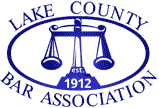Personalized Legal Services in Barrington & Schaumburg, IL
We speak English, Ukrainian and Russian languages
| Personal Injury |
Business Law |
Real Estate Law |
Wills, Trusts & Probate |
General Civil Litigation |
Elder Law |
Federal Tax Relief
On June 7, the President signed into law a $1.3 trillion tax-cut bill. The Economic Growth and Tax Relief Reconciliation Act of 2001 is the largest tax reduction in the last 25 years, although it will not do much for the cause of tax simplification. Taxpayers should bear in mind two time-related characteristics of the Act. First, the tax cuts are phased in over a period of years, with some of the most significant reductions occurring closer to 2010 than 2001. Second, due to arcane federal budget rules, the tax-cut provisions in the Act are set to expire on December 31, 2010, unless Congress takes action before then. The effect of the Act's many provisions on individuals and small businesses will have to be sorted out with the help of professional tax advisors, but the following are some of the key components.
Individual Income Tax
The Act phases in a reduction in tax rates, eventually lowering the 28%, 31%, 36%, and 39.6% brackets to 25%, 28%, 33%, and 35%. The existing 15% bracket will be split into 10% and 15% brackets. The creation of the new 10% bracket has generated the retroactive relief that will come to taxpayers this year in amounts ranging from $300 for singles to $600 for married couples.
Before the new law, married couples whose income was split more evenly than 70% to 30% were likely to pay more in taxes than if they were not married. Relief from this "marriage penalty" will come in the form of an increased standard deduction for joint filers to twice that of singles and a widening of the 15% tax bracket for joint filers to twice that of singles.
The child tax credit gradually will be increased from its current level of $500 to $1,000 in the year 2010. The child credit will continue to phase out above $75,000 for single individuals and those filing as head of a household, and above $110,000 for married couples filing jointly.
Education provisions in the Act are intended to help both families and individuals through direct tax and savings incentives. For example, the exclusion from gross income for employer-provided educational assistance, which would have expired after 2001, has been extended permanently. Contribution limits for individual retirement accounts for education have been increased from $500 to $2,000. There is a new deduction for qualified higher education expenses, but taxpayers may not take this deduction and the Hope or Lifetime Learning credits in the same year with respect to the same student. The deduction of student loan interest has been expanded beyond the first 60 months in which interest payments are required.
Estate Tax
Like many other aspects of the Act, the reduction and eventual repeal of the estate tax is phased in over a period of years. The top estate tax rates drop slowly from 55% to 45%, while during the same period the exemption jumps from the current $675,000 to $3.5 million. Eventual repeal of the federal estate tax suggests that estate planning will also eventually be simpler, but until that day arrives planning could actually be more complicated. For the rest of this decade, the estate tax will be changing virtually every year.
| Calendar Year | Estate Tax Exemption |
| 2002 | $1 million |
| 2003 | $1 million |
| 2004 | $1.5 million |
| 2005 | $1.5 million |
| 2006 | $2 million |
| 2007 | $2 million |
| 2008 | $2 million |
| 2009 | $3.5 million |
| 2010 | Repealed |
| 2011 | ???? |
Retirement Savings
The Act makes changes affecting both individual participants in retirement plans and employers that sponsor such plans. For individuals, the benefits are increased limits on contributions to plans, greater security for funds in the plans, and more flexibility concerning withdrawals, rollovers, and continuation of plans. As for businesses, the Act encourages the establishment of retirement plans, increases the deductibility of contributions, and generally makes the administration of plans more streamlined. Similar changes are in the Act for plans overseen by state and local governments, tax-exempt organizations, and colleges and universities.
Businesses
The Act could well have been called the Economic Growth and Individual Tax Relief Reconciliation Act, because 99% of the benefits from the Act will go to individuals. There are, however, a few provisions that will directly affect businesses. As noted above, the Act should simplify pension law, and it makes permanent the exclusion from gross income for employer-provided educational assistance, while expanding it to cover graduate studies. Employers can receive a tax credit equal to 25% of qualified expenses for employee child care (such as facility costs) and a credit equal to 10% of qualified expenses for child-care resource and referral services. Finally, the Act delays the due date for certain corporate estimated tax payments.
This website is not intended to constitute legal advice or the provision of legal services. By posting and/or maintaining the website and its contents, Lucas Law does not intend to solicit business from clients located in states or jurisdictions outside of Illinois wherein Lucas Law or its individual attorney(s) are not licensed or authorized to practice law.














